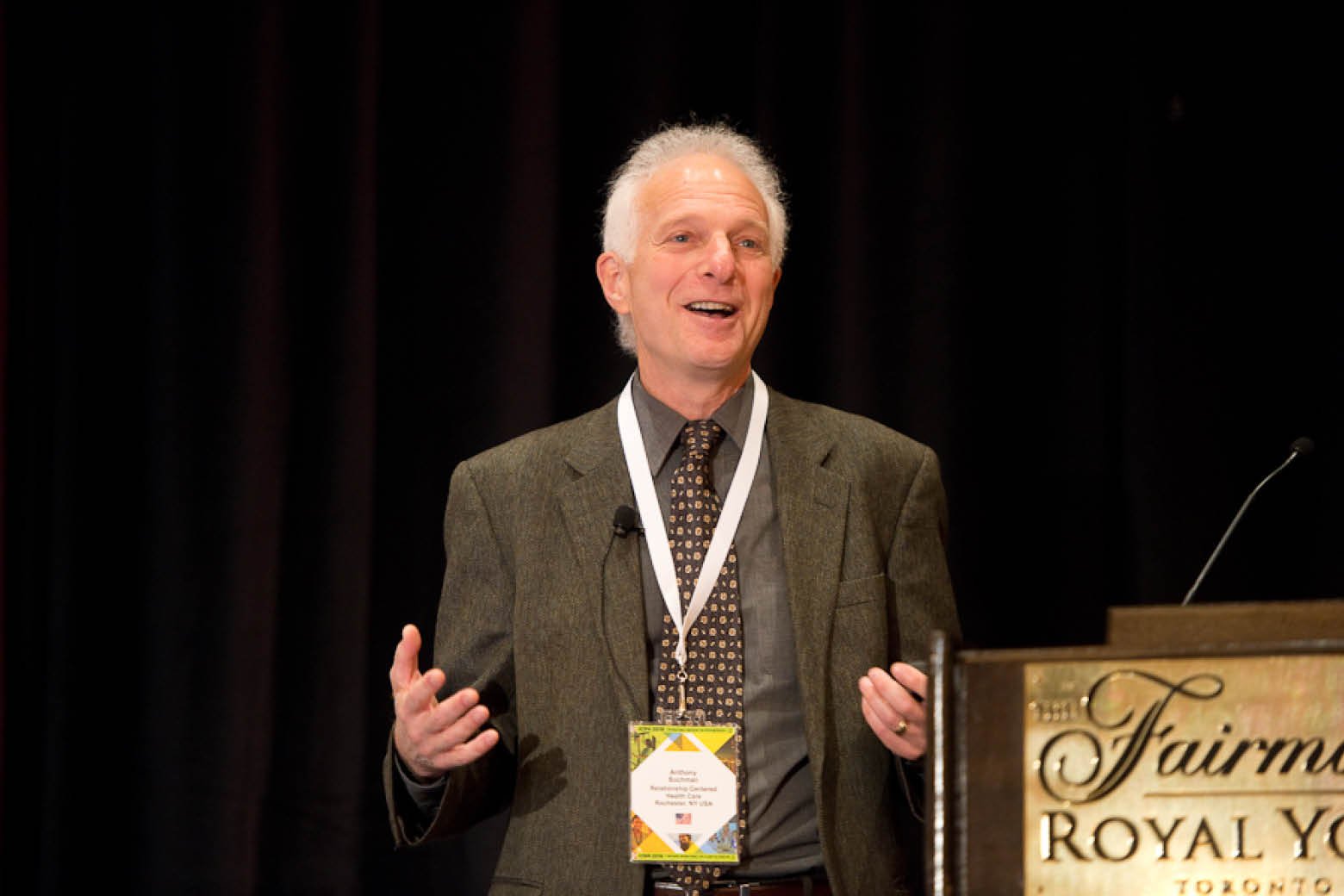Anthony Suchman, MD, hit a rough patch as a resident. With difficult rotations in neurology, the emergency department and intensive care unit, he became depressed. And at his year-end debriefing interview he learned that his chief resident knew he was struggling but had not reached out to help.
Amid an epidemic of physician burnout, physicians can make change happen by tackling the problem at an organizational level.
Properly addressing physician burnout “is a system issue,” said AMA member Dr. Suchman at the International Conference on Physician Health in Toronto, cosponsored by the AMA, British Medical Association and Canadian Medical Association. He is an internist and health services researcher at the University of Rochester Medical Center.
“Every system is perfectly designed to get the results that it gets,” said Dr. Suchman, an AMA member. “We have a system that is perfectly designed to toast people, to cause burnout in more than half of the people. Those are scary numbers.”
Committed to making physician burnout a thing of the past, the AMA has studied, and is currently addressing, issues causing and fueling physician burnout—including time constraints, technology and regulations—to better understand the challenges physicians face.
The AMA Ed Hub™—your center for personalized learning from sources you trust—offers CME on professional well-being that can help you prevent physician burnout, create the organizational foundation for joy in medicine, create a strong team culture and improve physician resiliency.
Meanwhile, the AMA’s STEPS Forward™ open-access platform offers innovative strategies that allow physicians and their staff to thrive in the new health care environment.
When changing the culture of a medical organization, Dr. Suchman said, physician leadership should keep these three seemingly paradoxical secrets in mind.
To make big changes, start small
If physician leaders want to change the culture of their health care organization, said Dr. Suchman, they need to start by noticing how patterns are being created in each moment. Is there a pattern of competitiveness? Collaboration? Isolation? How does that happen? Is that a desirable pattern?
“We need to foster an epidemic of mindfulness, a discipline of collective reflection and intentionality,” said Dr. Suchman. “Then we can start to develop some behavioral standards for ourselves.”
For example, set ground rules but know they only work if they are used consistently and if breaches can be named. Physicians should be aware of of the patterns they are creating in the way they act in every moment and the opportunity they have to create healthier patterns by modeling new behaviors such as self-disclosure and peer support.
To find an answer, be willing to not know
“We work in a professional culture that really values knowing the answers,” said Dr. Suchman. “There’s a lot of reinforcement for knowing.”
However, this cultural expectation can result in physician leaders feeling pressured to always know the answer. And even when the answer is unknown, many feel the need to pretend to know, which can lead to imposter syndrome.
To find answers, physicians need to be willing to not know. They should listen openly to others and be open to being changed by what they hear. Dr. Suchman urged physicians to believe that through “co-creating we are better together than we are alone.”
“We may have some idea of where we are trying to get to, but it may not be possible to know how to get there. We just have to figure it out as we go,” he said. “It isn’t a deficiency or failure of leadership, that’s just what it’s like to live and lead in a nonlinear world.”
To feel good, you have to feel bad
“The first step in experiencing change is always loss. There is no change that does not begin with some kind of loss,” said Dr. Suchman. “The most neglected part of leading change is helping people manage their own experience of loss and grief.”
Dr. Suchman concluded by stating that the biggest barrier to culture change may be widely shared skepticism—low expectations that change is even possible.
“Regardless of your position in your organization, rise above your low expectations, believe in the possibility of change,” he said. “Go out there and look for an opportunity to act differently moment by moment to make a change. The changes in small moments can add up to big culture change.”




